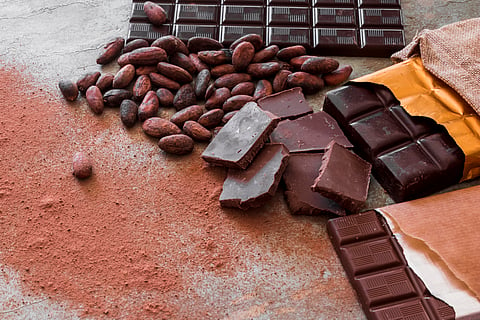
- Home
- EventsEvents
- Product Launches
- CategoriesCategories
- Advertise
- Opinion

Chocolate industry breathes a sigh of relief in view of new technology designed to detect destructive cocoa virus
Photo - freepik
Swiss agrifood testing company SwissDeCode, in collaboration with Mars Wrigley, has created an on-site test designed to detect Cocoa Swollen Shoot Disease (CSSD) in asymptomatic trees in less than 60 minutes.
For decades, cocoa trees have been thought to be infected, so the virus has been an acute problem for the cocoa and chocolate industry as it can reduce cocoa yield by up to 70%. Until now, no efficient methods to quickly detect the presence of the virus in the field in asymptomatic plants have been found.
An exciting new method adapted to the needs of the cocoa industry
Built on SwissDeCode's DNAFoil proprietary technology and incorporating underlying research from Mars Wrigley, the new solution is an easy-to-perform testing kit that would enable field personnel to test cocoa trees, using their leaves as samples quickly. The test would enable farmers to detect infected trees, even before they show any symptoms, and take immediate action to prevent the spread of the virus to healthy trees, thus helping to safeguard their current and future income.
Photo - David Greenwood-Haigh from Pixabay
The new rapid test provides an opportunity to benefit not only cocoa farms but also cocoa tree nurseries. It enables monitoring of tree health regularly and the release of planting materials only when they are substantially free of the virus. Finally, replanting infected areas and regenerating old farms can be conducted with greater peace of mind, helping farmers increase yields and income while preventing deforestation.
Collaboration with industry players is key
For the development of the new solution, SwissDeCode has partnered with Mars Wrigley, who, for a long time, has been advancing crop science to improve cocoa production across the globe. This successful collaboration has allowed SwissDeCode to understand end users' specific issues and requirements, from cocoa farmers to trading organizations. Once field validations have been completed, the kit will be ready for largescale use.
Brij Sahi, chief executive officer & co-founder, SwissDeCode, said, "Seeing that the result of our work helps to solve an issue that is impacting 14 million families makes us immensely proud. We are also making cocoa farming more sustainable by preventing large-scale deforestation caused by recurring infections."
Photo - Pablo Merchán Montes on Unsplash
Jean-Philippe Marelli, senior director Integrated Pest Management, Mars Wrigley, commented, "We have been looking for reliable preventive solutions against CSSD since the 1940s, as each year cocoa farms are being increasingly affected by this virus. Joining forces with SwissDeCode, we have finally found a rapid and reliable on-site diagnostic!"
What is Cocoa Swollen Shoot Disease?
The Cocoa Swollen Shoot Disease is caused by plant viruses and transmitted by mealybugs from infected to healthy cocoa trees. The region of West Africa is particularly affected, especially Ghana and Ivory Coast, where over 780,000 hectares of cocoa trees are believed to be infected.
Cocoa trees affected by CSSD can be asymptomatic for up to 2 years, but then they start to show symptoms such as red leaf veins or swollen stems and roots and typically die within 3-4 years of symptom development. Sick trees cannot be cured, and the disease can only be managed by preventing further spread to healthy trees by planting barrier crops or cutting out infected trees entirely.
These measures can significantly impact the sustainability of cacao production since they are responsible for the loss of thousands of hectares every year, and millions of dollars are spent in replanting cocoa trees, which is considered the best solution to stop the spread of the disease. This new technology enables early detection, which allows for targeted intervention and helps decrease the need to cut down adult trees to mitigate the spread of the disease.
